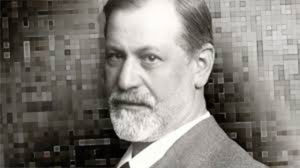De la violence dans le contre-transfert
Résumé
A partir de réactions contre-transférentielles particulièrement violentes l’auteur met en évidence des phénomènes d’identification projective dans le processus analytique. Dans un deuxième temps, elle montre des divergences dans la psychanalyse contemporaine quant à la compréhension du jeu transféro/contre-transférentiel. Alors que la conception classique du processus analytique se centre sur la névrose de transfert de l’analysant et son interprétation par l’analyste, un courant important de nos jours s’intéresse plus spécialement aux processus d’identification projective mutuelle et comprend le processus analytique comme relation réciproque, voire communication de deux appareils psychiques. Soulignant l’importance de sauvegarder l’asymétrie dans la relation analytique, l’auteur donne des exemples cliniques où la régression formelle de l’analyste, suite à des identifications projectives, était importante.
Samenvatting
Vertrekkende van uitgesproken gewelddadige tegenoverdrachtelijke reacties bespreekt de auteur het fenomeen van de projectieve identificatie in het analytisch proces. In een tweede tijd, toont ze de verschillende invalshoeken aan in de hedendaagse psychanalyse met betrekking tot het hanteren van het spel overdracht/tegenoverdracht. Waar de klassieke opvatting over het analytische proces de nadruk legt op de overdrachtsneurose van de analysand en de interpretatie hiervan door de analyst, bestaat er tegenwoordig een belangrijke stroming die zich meer speciaal interesseert aan de processen van mutuele projectieve identificatie. Zo wordt het analytisch proces gezien als een wederkerige relatie, ofwel als een communicatie tussen twee psychische apparaten. De auteur geeft klinische voorbeelden van belangrijke formele regressie bij de analyst, dit tengevolge van projectieve identificatie, waarbij het belang van het behouden van het asymmetrische karakter in de analytische relatie wordt aangetoond.
Summary
On the basis of particularly violent counter-transferential reactions, the author makes explicit some phenomena of projective identification in the analytic process. Subsequently, she points out divergences within contemporary psychoanalysis concerning the transference/counter-transference interplay. Whereas the classical conception of the analytic process is centred on the analysand's transference neurosis and its interpretation by the analyst, an important contemporary tendency is more interested in processes of mutual projective identification and understands the analytic process as a reciprocal relationship, or even as a communication between the two psychic apparatus. Insisting on the importance of preserving the asymmetrical aspect of the analytic relationship, the author gives clinical examples in which the analyst experienced major formal regression, following projective identifications.





